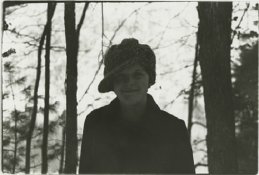Luke_Osborne
Member
This is a print I made in my university's darkroom, and for some reason the dark jacket on my friend came out very foggy. It's not really a very good print, her face is far too dark, but I think that might be more of an exposure problem. I actually printed this through a 4 1/2 contrast filter, as the first straight print I did came out even more muddy. I'm still just learning, but my main question was how do I avoid this type of fogginess in the future? I can't see it on the negative, though a low-power magnifying glass is all I've been able to use to look at it. The picture was taken on TMax 100 film, developed in straight D-76 for 14 minutes at 68F, 5 sec agitation every minute. The print was developed in Dektol (I don't know the concentration, as it's mixed by our professors, this could be a problem) for 1 1/2 minutes, 30 sec in stop bath, and fixed for 5 minutes.
As I'm more or less forced to use the university facilities, it does add a bit of randomness to developing, as I never really know how fresh the developer or fixer is in the trays. I may have to start mixing it up fresh when I use it, as I'm usually there after hours when nobody else is around to tell me I can't, haha.
Any thoughts or suggestions are welcome.
As I'm more or less forced to use the university facilities, it does add a bit of randomness to developing, as I never really know how fresh the developer or fixer is in the trays. I may have to start mixing it up fresh when I use it, as I'm usually there after hours when nobody else is around to tell me I can't, haha.
Any thoughts or suggestions are welcome.











